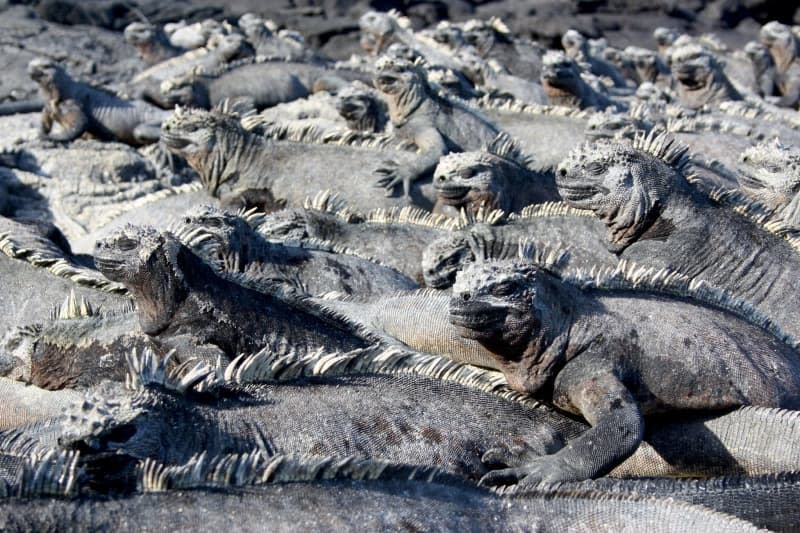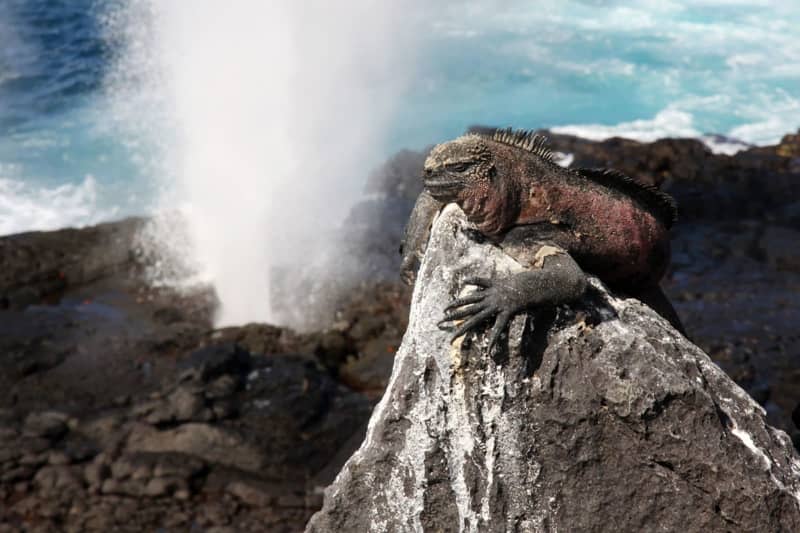Galapagos Islands, the remote wildlife haven, doubles its tourist fee

The Galapagos Islands, situated about 1,000 kilometres off the coast of Ecuador, are nature's treasure chest of the Pacific. The remoteness of the destination has long excluded it from all the effects of mass tourism.
In an effort to keep it that way, local officials are now upping fees for all arrivals to $200 - double the previous amount.
The government of the Pacific archipelago, which belongs to Ecuador, says it will increase the national park fee - required by anyone over the age of 12 - in six months, which would be at the end of August.
Immediately after arrival, tourists will then have to pay the $200, used to fund the park ranger service, which accompanies all visitors to the smaller of the 18 islands.
"The goal is to promote tourism focused on sustainability and the ability to boost the local economy," the officials said, announcing the decision in February. The fees, which also help support local nature conservation, have not been increased for 26 years, they added.
The move comes after similar measures were announced in Venice and Bali, where local officials have introduced tourist fees in an effort to help offset the impacts of mass tourism.
Visiting the Galapagos Islands, which are thronged with unusual animals, used to be difficult and expensive, but times have changed and affordable flights from the Ecuadorian cities of Quito and Guayaquil are now easy to find.
The Galapagos are one of the world's main showcases of the drama of evolution. Travellers with small budgets can get accommodation for around $14 a night, and can get to see the giant tortoises, seals, pelicans and monster terrestrial and aquatic lizards virtually for free.
Visitors to Galapagos have to be good at walking. On the uninhabited islands like Espanola, the routes are marked but there are no real paths. Galapagos, a world heritage site, is kept more or less in its pristine state.
This means balancing acts on rocks and ducking low branches. But the effort is worth it. One of the routes leads to a bay where every few seconds a gigantic water fountain springs forth from a hole in the rock.
This is where the blue-footed boobie birds can be seen. A male and female dance around each other, picking small branches from the ground and dropping them again. Then the birds knock their beaks against each other and then separate.
Those who wish to go hiking amid the booby and albatross nests on otherwise uninhabited islands are still better off to book a ship excursion, which can range between $250 and $800 per day.
But it costs much less to enjoy the astonishing sight of a giant tortoise withdrawing its long neck and tiny head into its shell, tucking its stubby legs inside too and slowly settling immovably in the sand. That makes it a perfect natural fortress.
Santa Cruz, the most important island for tourism in the archipelago, has a population of the giant tortoises.
The island capital of Puerto Ayora is home to around 12,000 inhabitants, or roughly half of the Galapagos population. In the harbour, seals doze while water taxis ferry people back and forth in the bay.
Fishing boats, freighters, and high-speed ferries ply the waters, heading to the other three inhabited islands, San Cristobal, Isabela and Floreana. A number of cruise ships lie at anchor here most months of the year.
People inhabit only five of the Galapagos islands. On four islands there are a handful of hotels. The easiest way of hopping from island to island is to take one of the cruise ships from the harbour. Rubber boats take the visitors to the ships anchored out at sea.
Most of the 25,000 inhabitants live in Puerto Ayora on Santa Cruz. Fishing boats and yachts ride at anchor in the bay. Youths can be seen on mountain bikes. There are a few shops, cafes and a church.
Many of the roads on Santa Cruz are tar-sealed. One of them leads to the interior through Puerto Ayora. Here you can visit the Charles Darwin Research Station where the animals are bred and released into the wild.
Charles Darwin visited the Galapagos Islands in 1835 and was fascinated by the variety of species. The islands are home to more endemic species than anywhere else on the planet, including 228 endemic plant and tree species, 28 birds, 19 reptiles and four mammals.
Many of the species can be observed on North Seymour. The iguanas can be seen in the low bushes, totally unaffected by the gaze of inquisitive visitors. There are two different species of the animals.
One lives exclusively on land. The others spend a lot of time in the sea, having adapted themselves to gnaw algae off the lava rocks close to shore. Especially large land iguanas can be seen on Cerro Dragon - the dragon hill on the west of Santa Cruz.
Pink coloured flamingoes can be seen around a small lake on the foothills of the Cerro Dragon. In the warm Pacific waters only a few steps away, visitors can bathe.
If you want to have a cold drink the only way is back on board the ship. The dragon hill is uninhabited and there are no beach cafes. The same applies to all the other fantastic beaches on the Galapagos islands.
One magnificent beach lies on the foothills of the Cerro Brujo of San Cristobal in the east of the archipelago. In other places it would have been ruined by hotel complexes. Here the park rangers however take great care that the tortoise nests are not destroyed by careless humans.
The beach of Cerro Brujo can only be reached by dinghy. Many visitors came at dawn to see the spectacular sunrise at Kicker Rock several hundred metres from the coastline. Thousands of seabirds can be seen swirling around the rock while sea turtles swim around in the surf.
GALAPAGOS ISLANDS FACTS
LOCATION: 1,000 kilometres west of Ecuador in the Pacific Ocean
POPULATION: 25,000
TIME ZONE: GMT -6
CURRENCY: US dollar
DIALLING CODE: +593
ARRIVAL: Airlines offer flights to the Galapagos from the Ecuadorian cities of Quito and Guayaquil.
WEATHER: Located on the equator, the islands remain warm year-round. The average temperature is 28 degrees. Generally, the warm Panama Current heats things up in the first half of the year, bringing sunny mornings and some brief afternoon showers. The cold Humboldt Current prevails in the second half of the year, shrouding the islands in cool fog. There's little rain in that period, but the wind picks up and brings rough seas. About once in a decade, the El Nino phenomenon brings heavy rain and plays havoc with the ecosystem and food chains.
WHEN TO GO: There's not a bad time of year to visit, but if visitors are also planning a trip to the Ecuadorean mainland, they will want to consider the weather there. From June to August, for example, the Andes see their dry season while the rainforest sees its dry season from September through February.
If travellers tend to become seasick, they should choose to visit in the first half of the year - also breeding season for land birds and sea lions and nesting season for sea turtles. Sea lion pups are prevalent in March through April, and from February through April, the islands blossom with flowers.
Despite rough seas, the last half of the year is the best season for divers because the Humboldt Current brings nutrient-rich water and attracts fish and birds. Wetsuits are recommended for the cold water. The albatross also arrives at this time, and the blue-footed booby does its mating dance.
EXPENSES: In addition to plane tickets and cruises, visitors must pay a $200 park entrance fee at the airport in cash. At the end of the cruise, passengers should also tip their crew and guide.
CLOTHING: Light clothing such as shorts and T-shirts are good during the day. A jacket or long-sleeved shirt are needed for nighttimes at sea.
MUST-HAVES: Essentials are sunscreen, a sun hat and binoculars. Seasickness tablets may also be helpful. Travellers who plan to snorkel should bring their own equipment or make sure their cruise ship provides it.


